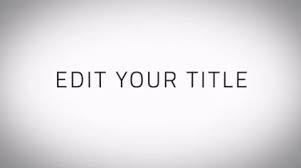There are so many ways to publish content on the internet. Images, videos, podcasts, and articles each have tons of choices through which anyone with a computer and WiFi can say whatever it is they want to say to the world. In the world of article and blog posting alone, the venues are extremely plentiful. I’ve tried many of them and my new favorite is Medium.
I’ve always loved WordPress. I enjoy Tumblr. I’ve used Blogger, TypePad, and dozens of other blogging platforms. I even went through a brief blogging-on-Google-plus phase. The way that Medium makes the written word work so easily has it at the top of my list.
Those using it will notice one glaring difference from the moment they start posting. It’s clean. Those who use the other platforms will probably think it’s too clean at first. Where are the buttons? Where’s the toolbar with all of the formatting options? All it says is, “Type your title, Type your subtitle, and Type your post.” Surely it can’t be that simple, right?
It was. It was actually simpler than that.
Those who are take the serious business of blogging seriously will initially think that it’s not powerful enough for them. Once they see that the necessary editing tools are easily available (which I’ll detail below), questions start to emerge, most notably this one:
Why has it taken so long for a platform like this to come around?
The clean way to post content
The basics are right there in front of the user. It doesn’t get any more plain, allowing a complete novice in content posting seem like a professional.
When it comes to content formatting such as headers, links, and blockquotes, the appropriate toolbar pops up exactly when it’s needed. One simply has to highlight a piece of text and the toolbar appears to give them their necessary options. There aren’t many – it’s just the basics – but it’s enough to make a post work properly.
There’s also an additional little feature that few have mastered. Highlighting particular pieces of text gives one the ability to add a note to that portion. This is extremely useful when wanting to post elaborations on a word or phrase without it cluttering up the post itself. For example, if one wanted to define words or attribute sources without the standard footnoting protocols that can make the text look sloppy. The notes are placed on the side and if someone clicks on it, the note pops up and the appropriate text is highlighted.
Images without constraints
Insert a picture. It doesn’t get much easier than that. There’s no sizing necessary. There are no alignment decisions to be made. You put the picture on the page and it looks good. Even better is that captions and attribution can be added within the image itself in the bottom right corner.
If the images are huge, they appear huge on the page. They can fill the screen if necessary, an amazing feature that takes plugins, special themes, or custom coding to accomplish on other platforms.
An end result of pure beauty
We all too often get caught up in adding too much. A look at every other blog on the internet reveals a cluttered mess of buttons, sidebars, headers, footers, tag clouds, ads, and whatever the widget of the month is. With Medium, it’s just about the content. That’s all you see. It’s pure.
This isn’t a platform that’s going to make bloggers any money. It’s not designed to take advantage of the promise of massive traffic through social media or even search. It shows content that people generate and nothing more. For this reason, it’s likely going to be able to help people get the exposure that their content deserves… eventually. Today, it’s just getting started. Twitter co-founder Ev Williams has a knack for keeping things simple and then making them successful. This project seems to be heading in that direction.
It’s not as powerful as WordPress. It doesn’t have the community abilities of Tumblr. There’s a good chance that I’ll be migrating back to them as my long-term favorites but for now, Medium definitely has my attention.


Leave a Reply